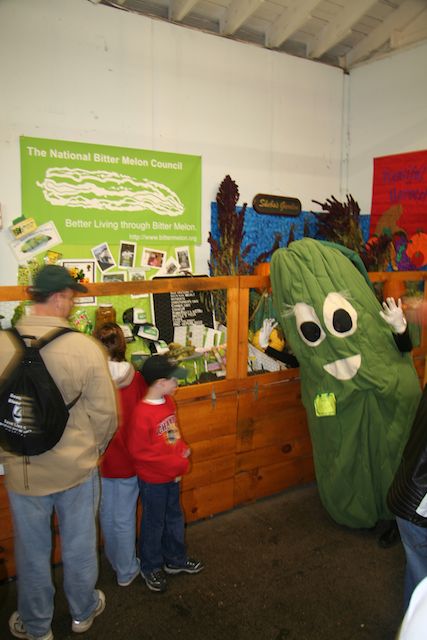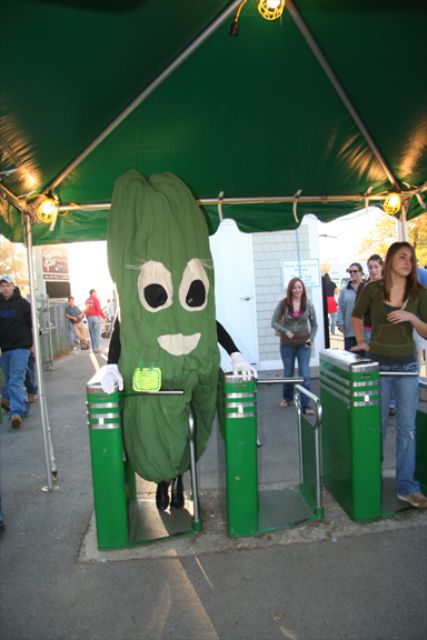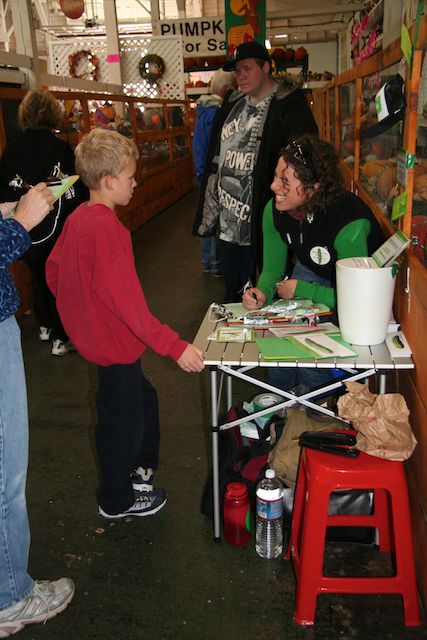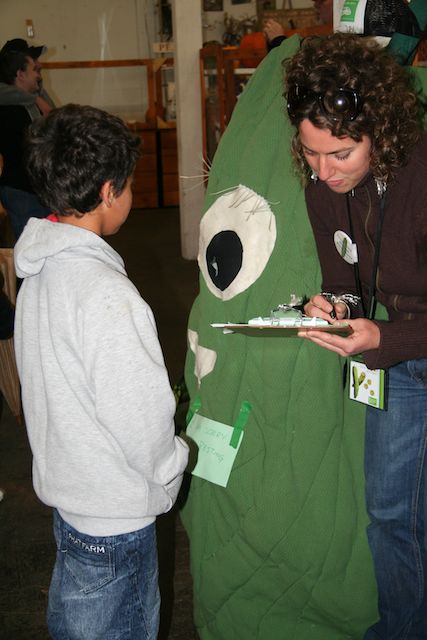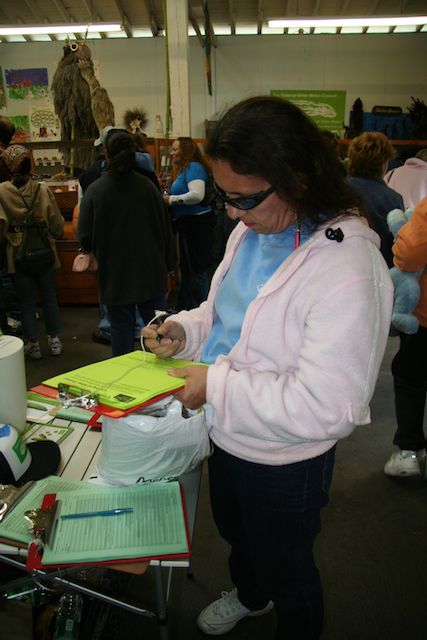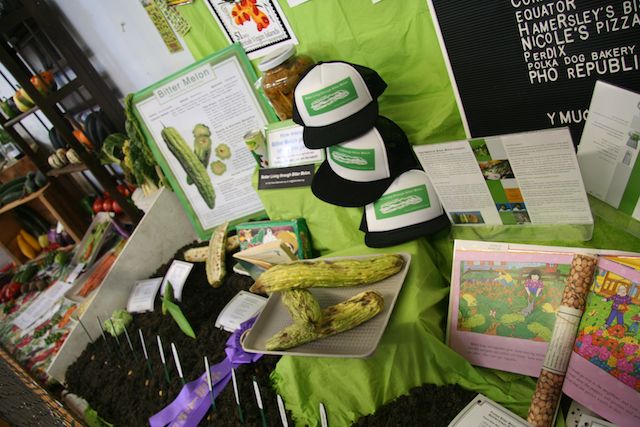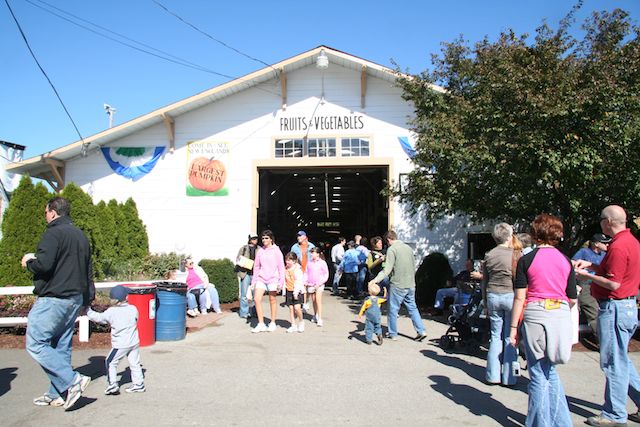A National Bitter Melon Council Participatory Public Intervention, 2006
The Topsfield Fair, Topsfield, MA, USA
The National Bitter Melon Council Educational Exhibit was installed in the Fruit and Vegetable Barn as part of the Educational Exhibit Competition at the Topsfield Fair in Topsfield, MA. The Topsfield Fair, founded in 1818, is the oldest agriculture fair in the United States. Agriculture fairs have a history of competitive harvest and livestock events. The Educational Exhibit at the Fruit and Vegetable Barn is no different – with exhibit categories for 61 different kinds of vegetables, 21 different types of fruit, decorated pumpkins, educational exhibits, and posters. In it’s nearly 200-year existence, Bitter Melon had never been exhibited before our entry in 2006. The submissions were judged by Topsfield Fair staff, and winners were awarded a ribbon and $25 cash prize. The NBMC installation won first prize in the “Educational Exhibit” category. It was accompanied by participatory performances: a Most Bitter Story contest, and a flavor and emotions-based survey project.
By submitting our exhibit into the fair competition, the NBMC encountered the most thorough blending of our literal and symbolic identities. As a vegetable promotion board, truly and honestly enthusiastic about Bitter Melon in all its uses, we were eligible to submit work in this category. Our competitor was a regional garlic council, among others. Promoting a new and novel vegetable made sense in this context, though the foreignness of Bitter Melon and the council was a bit harder for fairgoers to swallow. But, we were heartened by a story shared by the director of the Fruit and Vegetable Barn, a man who had been in the industry for over 20 years. He recalled the first year a farmer brought in a Giant Pumpkin. It was during an era where the best vegetables were the purist, most uniform examples. He turned the giant pumpkin grower away 5 years in a row, thinking it would not be of interest to people wanting to learn about agriculture. And now, it’s the most popular attraction at the fair.
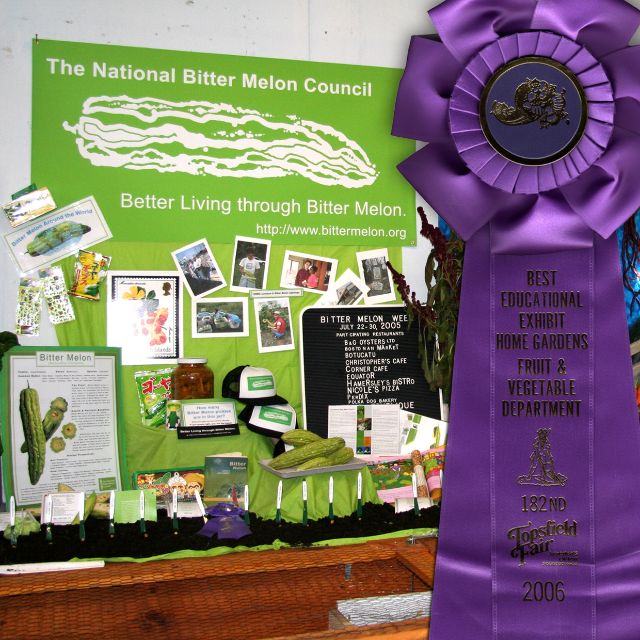
With the booth and
the Mascot at the fair we sparked confusion – how could such a large object that looked so much like a pickle actually not
be a pickle? How could a seemingly foreign “Asian” vegetable have been locally grown and locally marketable for centuries? How could a bitter emotion be relevant to a bitter vegetable? The activities we brought explored these questions by applying strategies of agriculture fairs and amusement park culture: competition, larger-than-life representations, a promotional goal and a more-is-more aesthetic. Educational Exhibit as a performance? Educational Exhibit as an earnest promotional strategy? Yes.




